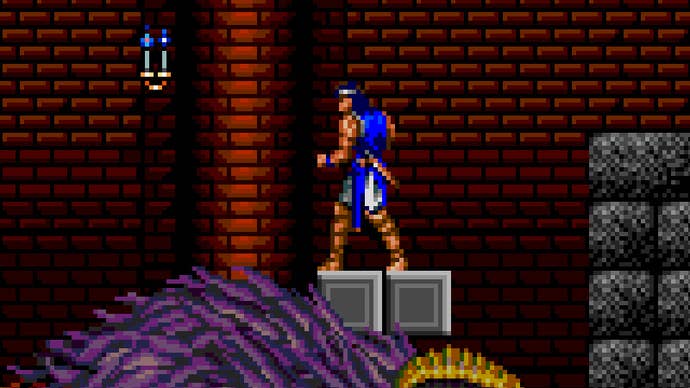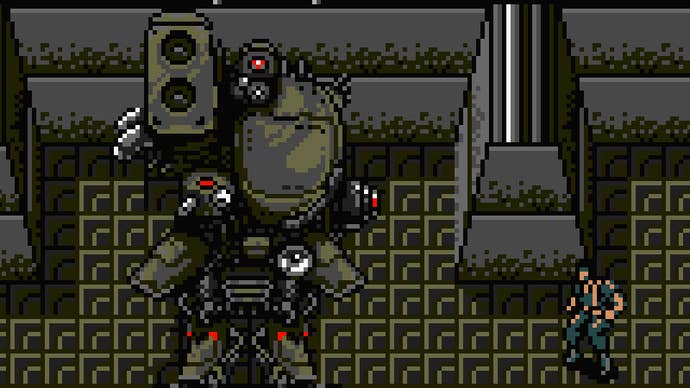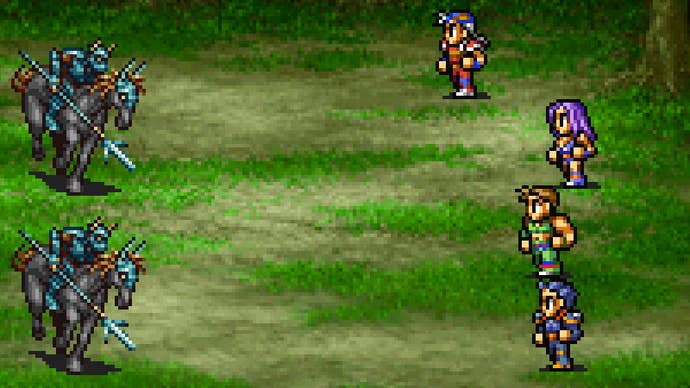The Long Journey West: 8 Japanese Games that Took Their Time Making it to America
Final Fantasy Type-0 isn't the only game to linger for years in a state of uncertainty. Now with video!
This article first appeared on USgamer, a partner publication of VG247. Some content, such as this article, has been migrated to VG247 for posterity after USgamer's closure - but it has not been edited or further vetted by the VG247 team.
This week brings us one of the least likely things to ever happen: Final Fantasy Type-0, formerly a PSP game—and one released in 2011—will be seeing new life on next-gen consoles with an HD remaster, finally closing the book on a years-long saga for frustrated RPG fans.
Type-0 isn't the only game to linger so long in a state of uncertainty, though. Plenty of other examples exist throughout our industry's relatively short timeline, and, for some of them, Final Fantasy Type-0's four-year gap might as well be the blink of an eye. Let's celebrate these minor triumphs of localization by taking a look back at the games that barely made the long journey from Japan.

Super Mario Bros. 2
[JPN: 1986 USA: 1993] "Did you know Super Mario Bros. 2 is actually a Japanese game called Doki Doki Panic?" For many of us, this little quote stood as the first piece of video game trivia we ever heard—and evidence that Nintendo wasn't always honest with its audience. To be fair, though, the version of Super Mario Bros. 2 we received remains a fantastic entry in the series, even if it is a little strange. Japan's Super Mario 2 took a much different form than ours, though; instead of being a journey through Sub-Con's trippy, Arabian Nights-inspired world, it launched with the label "Super Mario for Super Players." While it added a few new features—like a slippery, high-jumping Luigi and poison mushrooms masquerading as power-ups—this sequel picks up exactly where the last game left off. Essentially, it's the first Super Mario Bros., except way, way harder; even the first few stages don't pull their punches.
So, why did Nintendo choose to give us a different Super Mario Bros. 2? The sheer difficulty is a seemingly obvious culprit, but remember, this sequel released in an era when games could be so poorly made, they were essentially unfinishable to all but the most dedicated eight-year-olds. More likely, Nintendo still had the recent console crash fresh in their minds, and feared a Super Mario Sequel that looked and played just like its predecessor would give consumers video game malaise all over again. So, the company kept the Japanese version of Super Mario Bros. 2 hidden until they had no choice to acknowledge it with 1993's Super Mario Bros. All-Stars compilation. Of course, the English-language release rebranded SMB2 as The Lost Levels, but savvy Nintendo fans knew the real importance of this so-called "bonus content." Much rejoicing was heard, following by the sound of countless controllers being shattered across America. — Bob Mackey

Castlevania: Rondo of Blood
[JPN: 1993 USA: 2007] For a very long time, Castlevania: Rondo of Blood was a kind of holy grail—a nearly unmatched piece of nerd cred for American gamers. To play Rondo of Blood—widely regarded as one of the best Castlevanias ever made—before its long-awaited US release, you had to import not just the game but the hardware as well; in this case, the rather obscure PC Engine CD. Add it all up, and this piece of gamer arcana could cost you upwards of $500.
Hoping to capitalize on Rondo of Blood's popularity, Konami released an update port for the PlayStation Portable in 2007, throwing in Symphony of the Night for good measure. This version wasn't perfect, replacing Rondo of Blood's attractive sprites with rather ugly 3D models, but still, it was better than nothing. And, as an added bonus, Konami included the original Rondo of Blood along with an unaltered version of Symphony of the Night. Unfortunately, for those who had spent a rather large chunk of cash on Rondo of Blood (like our fearless leader), the original version quickly plummeted in value. But they could at least take solace in having experienced the best of Castlevania years before anyone else. — Kat Bailey

Metal Gear
[JPN: 1987 USA: 2006] Strangely enough, 1998's Metal Gear Solid stood as the first real Metal Gear game to be released in America. Sure, the NES adaptation of Hideo Kojima's 1987 MSX2 classic certainly exists, but there are some key differences; it doesn't even have the titular Metal Gear! That's kinda like putting out a game called Wizards and Warriors, only to make it about sorting various shapes of molded concrete. For a series so reliant on its own history, the lack of a proper Metal Gear release made several significant references of the Solid series completely fly over the heads of poor, ignorant Americans like you and me. (And the ones that made it to the NES version weren't translated very well.)
Thankfully, the 2006 release of Metal Gear Solid 3: Subsistence filled this gap in the Hideo Kojima's beloved series by bringing Americans Metal Gear and its sequel for the first time ever. Yes, these weren't emulations of the original MSX2 versions—instead, they're reworkings of previous mobile ports. But still, they're pretty faithful—definitely more than Metal Gear's NES port. And while some of Subsistence's more out-there extras, like the wonderful Snake vs. Monkey mode, haven't resurfaced in future Metal Gear compilations, 2011's Metal Gear Solid HD Collection contains the first two games of the series as they appeared in Subsistence. If you've never played the beginning of the saga, these two games definitely make for a great time; just be ready to have them kick your butt. — Bob Mackey

Final Fantasy II
[JPN: 1988 USA: 2003] Final Fantasy II almost made it to the U.S. back in the day — not only did Square promote it at trade shows, they even had a working (if not particularly coherent) localization for it. But due to the initial delay in getting the first Final Fantasy into English (nearly three years), FFII was unreasonably dated by the time its U.S. release rolled around… so Square just changed Final Fantasy IV's name to "Final Fantasy II" and the series jumped directly to 16-bit power for its first follow-up, so far as Americans knew.
A decade later, of course, Sony lined up the international release dates and numeration for the series with Final Fantasy VII, and Square began filling in the gaps of localization. That meant retitling FFIV with its proper Roman numeral and bringing over Final Fantasy II via a PlayStation remake (packaged with the first game as Final Fantasy Origins).
For once, the delay wasn't such a bad thing. The original FFII for Famicom/NES was a dicey affair with an innovative but not particularly balanced (or fun) character development system. The remake smoothed things over somewhat… and it also read a lot better in English than that earlier attempt had. While still a controversial entry in the series, at least its delayed launch recontextualized it as a weird historical curiosity rather than the game that turned young Americans off from RPGs forever. — Jeremy Parish









